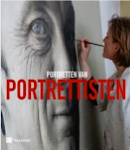Because they think it's a good idea.

A series of talks and conversations organized by Jan Verwoert in Berlin
In reference to Irreverence. Friday, November 14th, 7:30 PM
e-flux
What is the future of medium-specific practices after Conceptualism? What is the future of Conceptual Art after the 1990s?
The dominant models no longer satisfy. It makes no sense to melodramatically invoke the "end of painting" (or any other medium-specific practice for that part) when the continuous emergence of fascinating work obviously proves apocalyptic endgame scenarios wrong. Yet, to pretend it were possible to go back to business as usual seems equally impossible because the radical expansion of artistic possibilities through the landslide changes of the 1960s leave medium-specific practices in the odd position of being one among many modes of artistic articulation, with no preset justification. How can we describe then what medium-specific practices like painting or sculpture can do today?
Likewise, it seems, that we can still not quite convincingly describe to ourselves what Conceptual Art can be: An art of pure ideas? As if "pure" idea art were ever possible let alone desirable! An art of smart strategic moves and puns? We have advertising agencies for that. The social and political dimension of Conceptualism has been discussed, but often only in apodictic terms, not acknowledging the humour, the wit, the existential, emotional or erotic aspects, as well as the iconophile, not just iconoclast motives, that have always also been at play in the dialectics and politics of life-long conceptual practices.
the building, Platz der Vereinten Nationen 14a, Berlin, Magdalena@e-flux.com

A series of talks and conversations organized by Jan Verwoert in Berlin
In reference to Irreverence. Friday, November 14th, 7:30 PM
e-flux
What is the future of medium-specific practices after Conceptualism? What is the future of Conceptual Art after the 1990s?
The dominant models no longer satisfy. It makes no sense to melodramatically invoke the "end of painting" (or any other medium-specific practice for that part) when the continuous emergence of fascinating work obviously proves apocalyptic endgame scenarios wrong. Yet, to pretend it were possible to go back to business as usual seems equally impossible because the radical expansion of artistic possibilities through the landslide changes of the 1960s leave medium-specific practices in the odd position of being one among many modes of artistic articulation, with no preset justification. How can we describe then what medium-specific practices like painting or sculpture can do today?
Likewise, it seems, that we can still not quite convincingly describe to ourselves what Conceptual Art can be: An art of pure ideas? As if "pure" idea art were ever possible let alone desirable! An art of smart strategic moves and puns? We have advertising agencies for that. The social and political dimension of Conceptualism has been discussed, but often only in apodictic terms, not acknowledging the humour, the wit, the existential, emotional or erotic aspects, as well as the iconophile, not just iconoclast motives, that have always also been at play in the dialectics and politics of life-long conceptual practices.
the building, Platz der Vereinten Nationen 14a, Berlin, Magdalena@e-flux.com




















No comments:
Post a Comment